PROs and CONs of potato
Author:
Unlock your full potential by engaging with our experts and community! Have questions about your fitness journey or looking for expert advice on weightlifting techniques? Don’t hesitate — leave a comment below and Sergii Putsov will provide a personalized answer and insights to help you reach your goals.
Torokhtiy is reader-supported. Some links are affiliate links, and we may earn a commission at no extra cost to you. See our disclosure page for details.
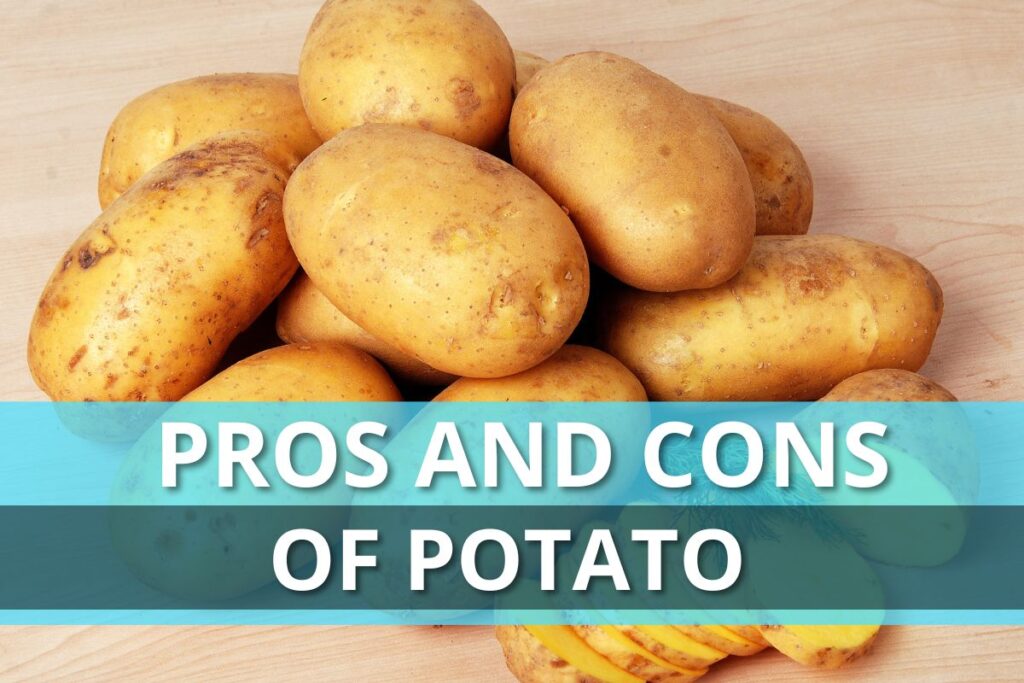
Potato is a unique plant as it combines features of starch-rich products but actually is a vegetable. Unfortunately, potatoes (especially white ones) have a bad reputation that is, in fact, neither earned nor proved. Nevertheless, not all potatoes are equally healthy or harmful, it all depends on which part of your ration they take and also on the cooking method.
Calories, proteins, carbohydrates, and fiber
Potato is considered to be a high-calorie product but indeed 100 grams of potato contains only 94 calories, the same as 100 grams of boiled buckwheat does. Among all starch-rich products (bread, rice, corn, couscous, and other cereals, pasta, pulses) potato is one of the most low-calorie ones.
100 grams of potato contain 20 grams of carbohydrates, mostly in the form of starch. There is almost zero fat unless it is added during the cooking process in various forms such as vegetable oil or butter, sour cream, sauces, and other condiments.
It is not rich in protein, there are only 2 grams of it per 100 grams of unpeeled potatoes. To get 4 grams of protein you can eat 2 mid-sized potatoes with a total weight of 200 grams. But this is going to be a high-quality protein with great amino-acids composition and digestibility. It depends on the sort, but generally, the potato protein is very close to egg protein and surpasses soya beans and pulses in terms of biological value. Factually the quality of potato protein is higher than in any other vegetables.
You may like it:
Fiber is located in the cell walls of potato, especially in thickened peel walls. 100 grams of cooked potato contains 1,8 grams of fiber. In 100 grams of unpeeled potato, there are more than 2,1 grams of fiber.
By the way, some small part of potato starch is not digestible (it is called resistant starch), especially when the potatoes get cold after cooking. Resistant starch acts similarly to fiber and helps to control glucose and fat levels in the blood.
Vitamins, minerals, and antioxidants in potatoes
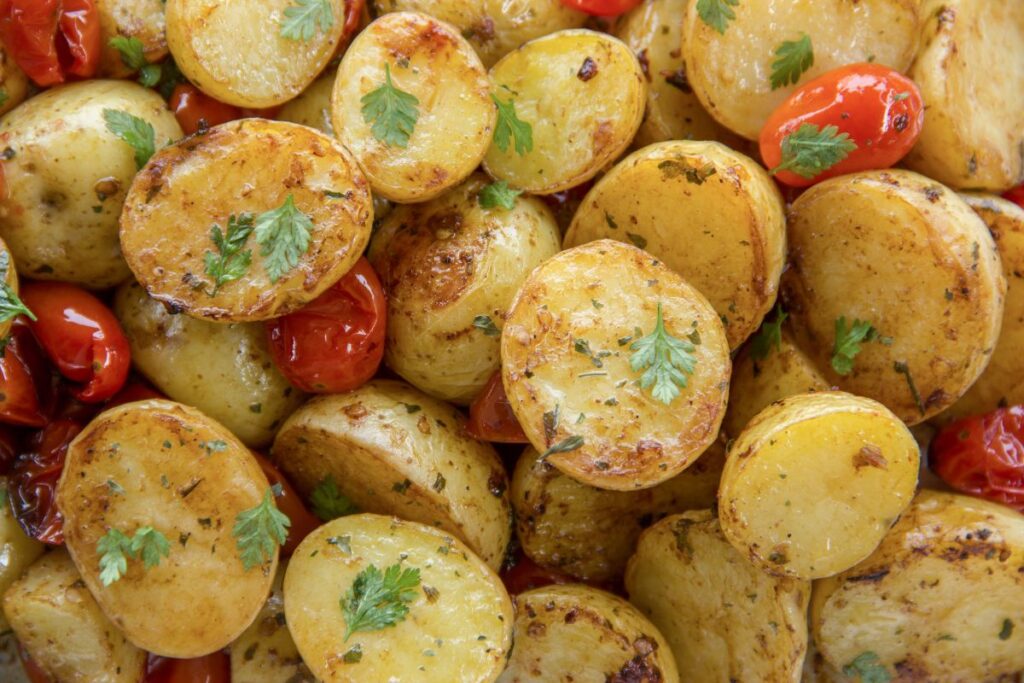
Potato is a good source of B-group vitamins, particularly B3, B6, and B9. As a reminder, we will say that B-group vitamins are actively involved in the metabolism of carbohydrates, which are primary energy sources, and support the functions of the nervous system that is crucial for athletes of all kinds.
In one 180 grams size potato there is about 10 mg of vitamin C. There are no other starch products that can match potato in vitamin C content. This is a small but nice additional merit of potato.
Potato is a great source of potassium. In 100 grams of cooked unpeeled potato, there are as many as 544 mg of this mineral, which is 12% of the adult daily value. Potassium is necessary for muscle contraction and nerve impulses transfer which is very important for the athletes who need to activate many muscle groups simultaneously.

Also, potatoes contain a bit of magnesium and iron. 100 grams of unpeeled potato contains about 75 mg of phosphorus. But unlike many other plants, only a small amount of this phosphorus is in the form of phytates. This is a big advantage as with the smaller phytates concentration the bioavailability of iron and zinc is higher than in other products (pulses, wheat, and corn). Furthermore, the bioavailability of iron reaches higher levels due to vitamin C, since ascorbic acid boosts the absorption of nonheme iron.
Vitamins and minerals composition in potatoes may vary according to the cooking method. Nutrient preservation is highly dependent on temperature, time, and outgoing form of the potato (mashed or whole, peeled or not). During the boiling process water-soluble vitamins (C and B-group vitamins) levels are reducing, the same applies to potassium as well. If potatoes were cut into pieces before boiling they also lose some iron, magnesium, phosphorus, and other minerals. To prevent potatoes from losing beneficial elements it must be boiled unpeeled.
Waterless cooking methods help to save more vitamins and minerals. For example, losses of vitamin C were demonstrated to be reduced when potatoes are cooked in a microwave oven or baked. Also, potato contains antioxidants that are good at fighting diseases related to aging.
The difference between white potatoes and sweet potatoes
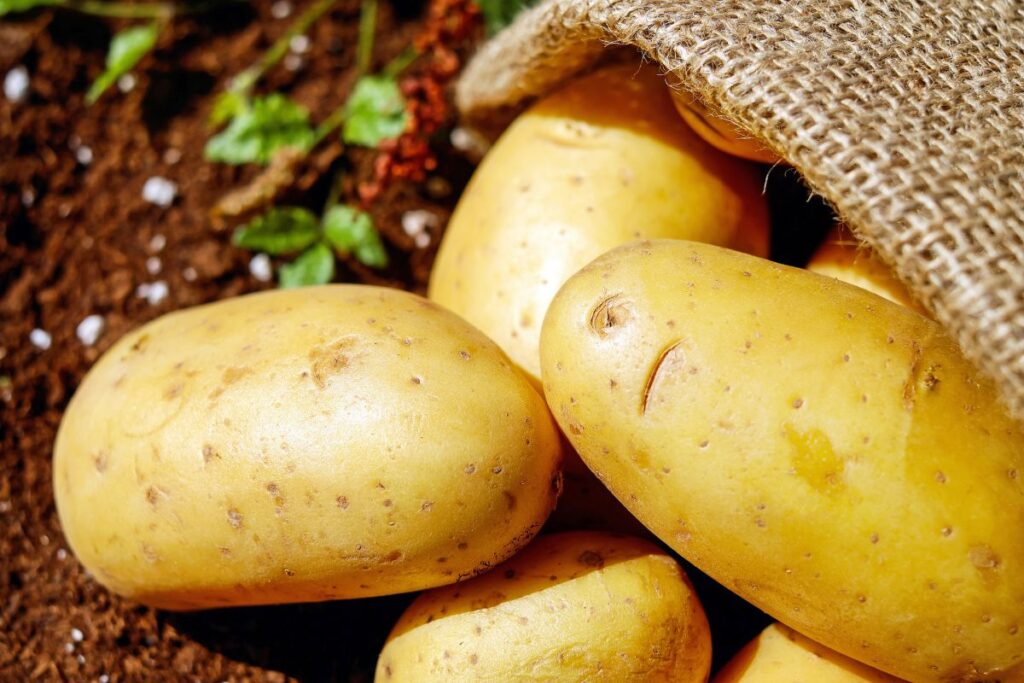
Despite the fact that they may sound like white potato and sweet potato have nothing in common from the botanical point of view. White potato is closer to tomatoes, eggplants, and bell pepper, whereas sweet potato is more about shrubs and herbs.
They are almost 100% identical in calories, carbohydrates, and protein content. Sweet potatoes have more fiber. Also, it is unmatched in vitamin A and beta-Carotene levels. In everything else, these two products are very similar to each other.
Potato is a stomach filling product that won’t hurt your weight loss
As we have mentioned before, potato is one of the most low-calorie garnishes in comparison to other starch-rich products (pasta, rice, and other cereals, pulses). But note to yourself – that only concerns the potatoes that were cooked without oil. Fried potatoes can double or even triple their calories!
We have great news for those who are keeping fit and not willing to put on any weight – potato possesses a very high satiety index. There is research that shows that potato satiety excels even fish, beef, and pulses. And when somebody is well-fed he has little to no chance to violate his calorie limit. This is for sure a helping hand in slimming and maintaining weight.
When potato can cause problems
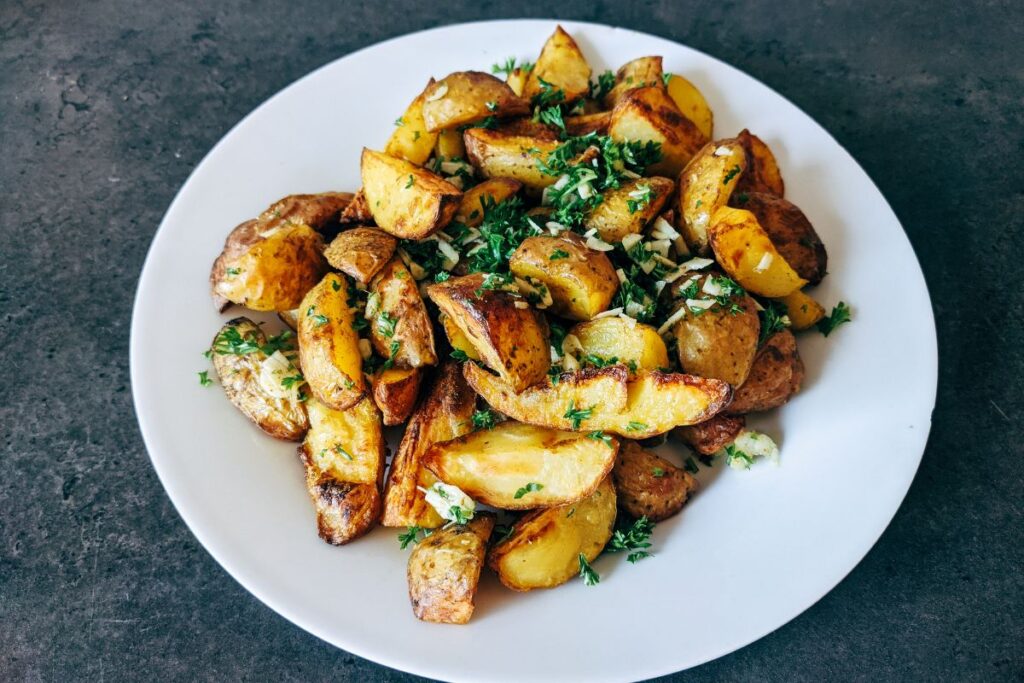
Leaves, stems, and sprouts of potato contain toxins in high concentration as a natural defense against insects and fungi. These levels are drastically lower in the potato itself, nevertheless, higher concentrations are located under the peel.
It is important to know that a pale or spotty peel of potatoes is an indicator to avoid it. Green spots show higher levels of toxins that can be bad for health if consumed too much. In this case, cooking is not a remedy, and peel with such spots must be removed priorly. If potatoes grew some sprouts during the storage they must be removed, or better get rid of such potatoes at all.
For toxin levels to remain low and good nutrients high potatoes should be stored in dark and cool (6-10°C) well-ventilated places.
We hope you realized that the best ways to cook potatoes are to have them whole boiled or baked unpeeled and without adding any butter or oil. Frying potatoes, adding oil or cream while cooking or serving, or eating potatoes as chips should be considered as a totally different story. Calories skyrocket in these cases whereas the benefit for your health doesn’t.
Generally, both white and sweet potatoes are very delicious and healthy products. As a part of a well-balanced diet, they will provide a great range of nutrients, maintain satiety, and make the ration more delicious. But remember about moderation as with any other product. And of course, don’t ignore the rules of safe storage and remove green spots and sprouts. Stay healthy!
You might be interested in:
Why Trust Us?
With over 20 years in Olympic weightlifting, strength training, nutrition coaching, and general fitness our team does its best to provide the audience with ultimate support and meet the needs and requirements of advanced athletes and professional lifters, as well as people who strive to open new opportunities and develop their physical capabilities with us.
By trusting the recommendations of our certified experts in coaching, nutrition, and sports training programming, as well as scientific consultants, and physiotherapists, we provide you with thorough, well-considered, and scientifically proven content. All the information given in the articles concerning workout programming, separate exercises, and athletic performance, in general, is based on verified data.
The product testing process is described in more detail here.
Author: Sergii Putsov
Head of Sport Science, PhD
Best Results: Snatch – 165 kg,
C&J – 200 kg
Sergii Putsov, Ph.D., is a former professional weightlifter and National team member, achieving multiple medals in the 94 kg weight category at national competitions. With a Master’s degree in “Olympic & Professional Sport Training” and a Sport Science Ph.D. from the International Olympic Academy, Greece, Sergii now leads as the Head of Sport Science. He specializes in designing training programs, writing insightful blog articles, providing live commentary at international weightlifting events, and conducting educational seminars worldwide alongside Olympic weightlifting expert Oleksiy Torokhtiy.



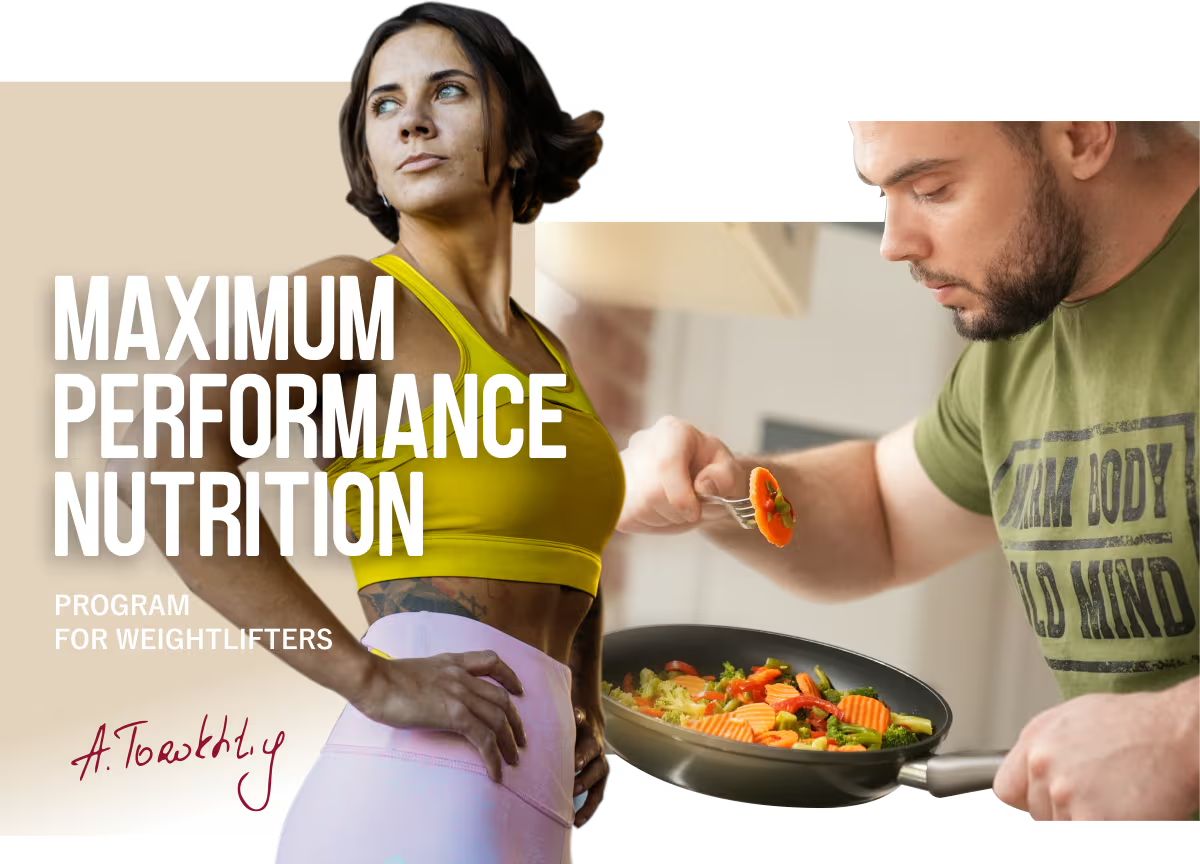
Still have questions after reading our article? Unlock your full potential by engaging with our experts and community! Don’t hesitate — leave a comment below and Sergii Putsov will provide a personalized answer and insights to help you reach your goals.